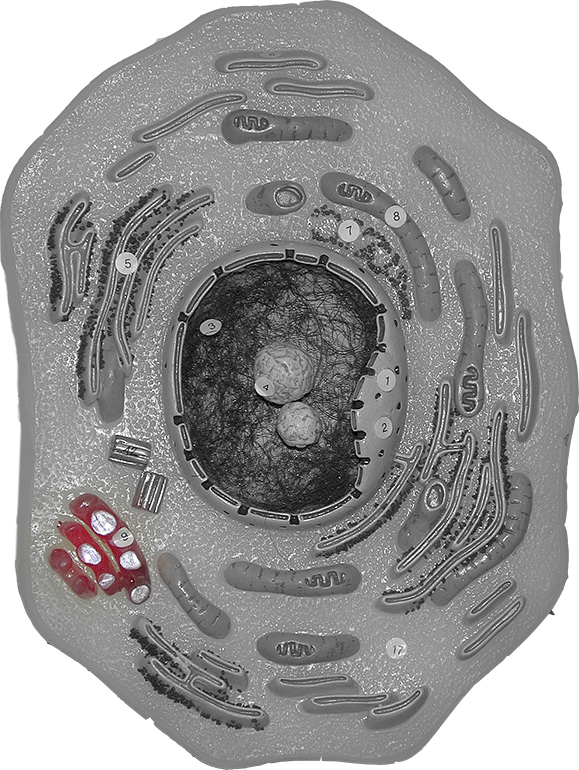Golgi Apparatus
|
|
The Golgi Apparatus is shown in red in the image located to the right.In electron micrographs it looks like a stack of pancakes. The Golgi is a stacked membrane organelle. The Golgi is like the post office of the cell. It takes packages produced by other organelles like the ER and stamps and redirects them to the appropriate cellular location. The cell is a big place to a molecule. After a molecule is produced, how does it know where to go? Is a nuclear protein or a plasma membrane protein? You don't want to stick the wrong protein in a membrane! The Golgi figures all of that out. If a protein is meant for the plasma membrane the Golgi wraps it up in a vesicle and stamps it (adds a marker) and sends it off to the plasma membrane where the protein gets incorporated. The Golgi also packages secretory products. So when cells want to dump product outside of the membrane they use the Golgi Apparatus in exopinocytosis. The Golgi also produces vesicles that become lysosomes.
Lysosomes
Lysosomes are small membrane-bound vesicles produced by the Golgi Apparatus that contain digestive enzymes (lysozyme, acid hydrolases). These digestive enzymes are important in cell recycling and in cell immunity/protection. Organelles wear out just like your appliances at home will eventually wear out. Cells however are not throw-away societies. When a mitochondrion wears out, a cell can't leave it by the curb and just pop over to Walmart and pick up another. Instead the cell lysosomes will fuse with the defunct organelle and break it down to its components. Those components are released back into the cell to be reused or are discarded outside the plasma membrane. Similarly, some body cells are phagocytes, they eat other cells. When a white blood cell (phagocyte) eats a bacterium it encloses it in a vesicle. Lysosomes fuse to this vesicle, dump in their digestive enzymes and destroy the bacterium.
Peroxisomes
Peroxisomes are small membrane-bound vesicles that contain 'oxidase' enzymes. These enzymes are involved in detoxifying toxic compounds including various oxygen species and in the breakdown of long chain fatty acids. Tissues like liver that are responsible for detoxifying compounds circulating in the blood are rich in peroxisomes.
To view an interactive model of the cell, follow the link below. Select animal cell. If you click on an organelle below the interaction you can view more information on that organelle.
http://www.cellsalive.com/cells/cell_model.htm




